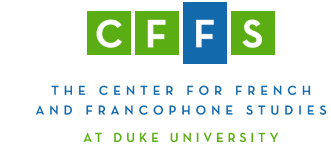Seminars
Starting in Fall 2015, two graduate courses are offered that contribute to this project.
Conference

Creating is Remembering, 2016-Poetry Books-1401
June 2-4 2016, Duke University
A small, international group of faculty and students exploring the critical debate around the late medieval literary anthology manuscript and the long cultural memory of such poetic objects.
Digital surrogates of the 2 Turin & Stockholm manuscripts serve as a first point of departure. Conference participants also investigate additional manuscripts from other Romance literatures, or from different pre-modern periods.
The colloquium contributed a broad reflection on the significance and function of these literary anthologies dans la longue durée.
Deborah McGrady, University of Virginia
- Courtly Poetry stripped of its Aura: Collecting, Reading, Writing in Turin, Archivio di Stato, J.b. IX 10
Benjamin Albritton, Stanford University
- Patterns of Transmission across Late Medieval French Lyric Collections
Liz Milewicz, Digital Scholarship, Bostock Library, Duke University
- Can the Repository be a Platform for Creating?
Sylvie Lefèvre, Université Paris-Sorbonne
- Livre d’Inglant / livre de mémoire: les œuvres de Charles d’Orléans et d’autres poètes dans les manuscrits Paris BnF, fr. 19139, Arsenal 2070, et quelques autres…
Nathalie Koble, Ecole Normale Supérieure, rue d’Ulm
- Brouiller et fatrouiller le parchemin: qu’est-ce que la poésie de circonstance?
Amandine Mussou, Université Paris-Diderot
- Mise en scène du vers et conscience formelle dans le manuscrit de Stockholm
Jane Taylor, Oxford University
- « Le Temps, qui tout efface, jusques icy ne l’a sceu effacer »: François Villon, Context, Co-Text & Memory
Helen Solterer, Duke University
- Fac-similé & Memory: Schwob alias Villon
Martin Eisner, Duke University
- What did Dante’s Virgil Look Like? : An Introduction to Dante’s Library
Tessa Nunn, Duke University
- Embodying and Writing Joan of Arc: Christine de Pizan & Joan of Arc


